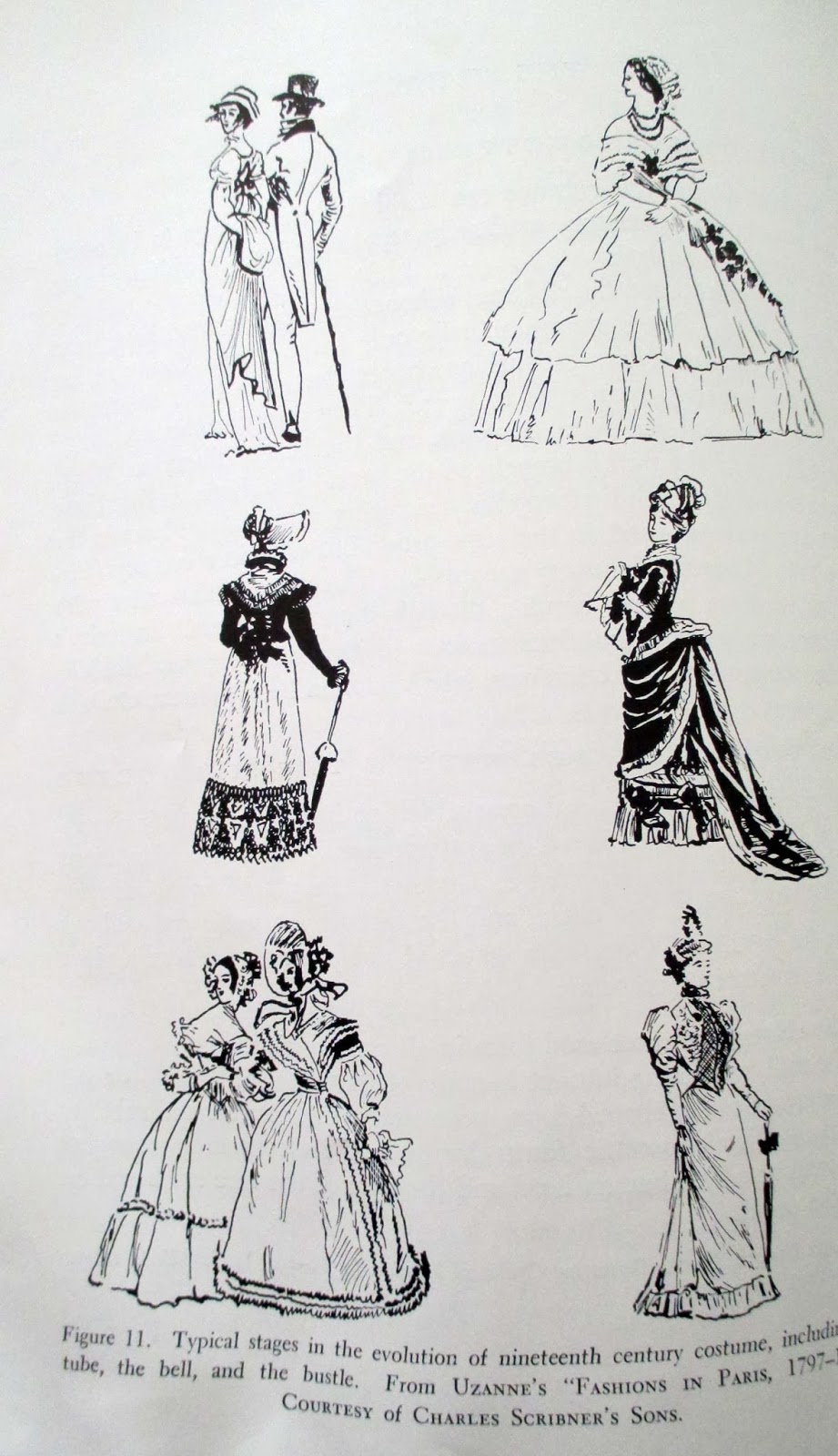- Straight lines, as found in tailored clothes, Mission furniture, and modern skyscrapers
- Full, round curves as pictured below and as found in Rococo art
- Restrained curves, as in curling smoke, the curve of a flower stem, Chinese paintings, and "the undulating lines of a picture hat."
Additionally, lines produce movement.
Vertical lines are found in Gothic sculptures, or in pleated skirts or striped shirts.
Horizontal and vertical lines appear in the aprons worn in this 1962 ad
Horizontal lines appear in flounced skirts, the wide off-the-shoulder necklines of the Romantic period, and in horizontal striped shirts.
Diagonal line movement is found in surplice closings as in the picture below.
The silhouette is noticed first, especially from a distance. It changes with the modes, and with seasons, and over the years. The dress worn during Jane Austen's time was basically tubular. The Victorian dress was bell shaped. The bustle brought in an "S" shape.
A 1943 "tubular" silhouette
"One of the most important requirements of all art is that it conform to the law of unity with variety, or variety within unity. The silhouette must be judged by this law." The silhouette should be related to body structure, hide imperfections, and emphasize good points. The hoop skirt, bustles, and mutton sleeve did not fall under this stricture.
19th c "bell" shaped skirt had little to do with anatomy. It did make the waist look smaller.
Maggy Rouff evening gown, courtesy of Harper's Bazaar, "Perfection in this geranium pink pleated crepe dinner gown, flowing gracefully with body lines and emphasizing points of body articulation. It satisfies the modern demand for elimination of every unnecessary detail and for a silhouette neither too revealing nor concealing."
The outline should be interesting, and in character with the spirits of the times. Grace notes that in the 1940s a return to femininity was revealing smaller waists, curved bosoms, and graceful flowing skirts. The severity of tailored suits should be softened as in the suit below with its sleeves gathered at the wrists, waistline definition, and contrasting dickey.
The full, round shapes of the Botticelli inspired gown below is constrained by the embroidered bands.
Designed by Jessie Franklin Turner. Metropolitan Museum of Art.
Rhythm in costume can be found in the draping of fabric in the colors or prints of the fabrics, embellishments, and it line.
Vivian Leigh as Lady Hamilton. Courtesy of United Artists Corporation. white crepe with sequin embroidery is a gown of classic inspiration, where a beautiful rhythm is achieved by skillful cutting and shaping.
Allowing certain lines dominance holds the viewer's attention.
The beautifully curved waistline and the graceful flowing skirt with its pointed inserts are subordinated to the greater interest of the bodice top and interestingly designed sleeve's.
An afternoon coat in which a dominant horizontal rhythm is given stability by a vertical movement. The shapes themselves have significance, but with relationship to the whole.
Next time I will offer advice from the chapter The Art of Combining Colors.
















